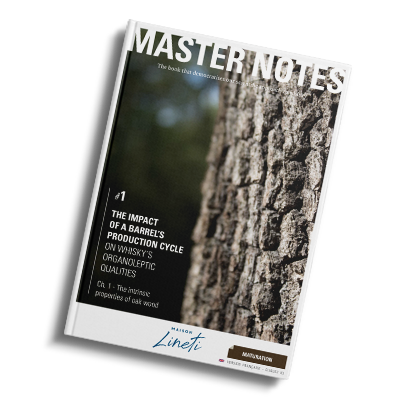The intrinsic properties of oak
Oak is much more than just a container for whisky ageing. Its remarkable mechanical properties, natural heat insulation and watertightness make it the preferred choice for cooperages. Three species dominate within the craft: Quercus petraea, Quercus robur and Quercus alba. These varieties of oak, thanks to their specific composition and growing conditions (geography, climate), give whisky its distinctive sensory characteristics.











